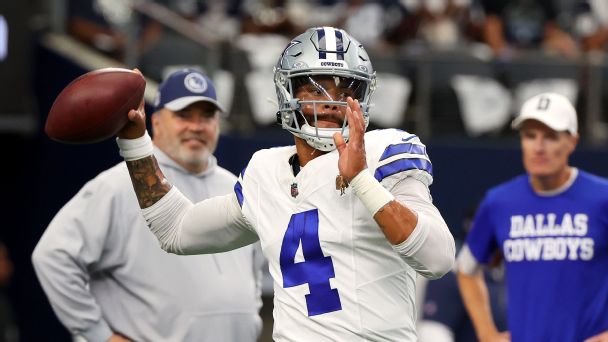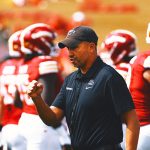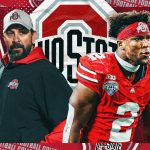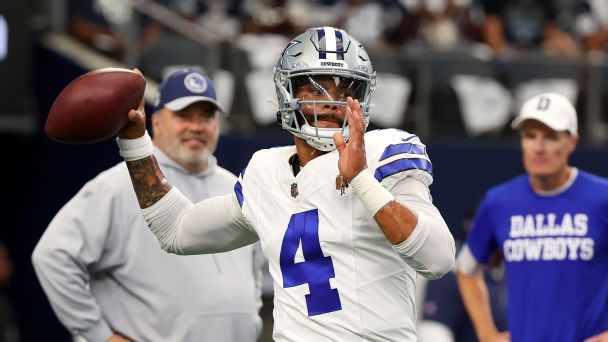
FRISCO, Texas — It was first down at the Dallas Cowboys‘ 3-yard line with 54 seconds left in the first quarter of Sunday’s game against the New York Jets when Dak Prescott took the snap from Tyler Biadasz.
On his first two steps, he is staring at Jets safety Tony Adams. As Prescott takes his third step, wide receiver CeeDee Lamb plants hard on his left foot, starting to make his move on a slant route with cornerback D.J. Reed playing with outside leverage.
On the quarterback’s third step, Prescott’s weight is on his right foot and his left hip starts to open. Lamb has not yet cleared Jets’ linebacker Jamien Sherwood when Prescott throws the pass that lands perfectly between the numbers of Lamb’s No. 88 jersey, giving him a chance to get up the field and pick up 31 yards.
In a game filled with incredible physical feats, the Prescott-to-Lamb connection was as mundane as they come, but its simplicity marked something coach Mike McCarthy, who replaced former offensive coordinator Kellen Moore as the playcaller this season, finds beautiful.
Prescott’s feet and Lamb’s route were perfectly in sync and led to the Cowboys’ longest play in the 30-10 win.
“He was seeing it really well, and if you watch Dak, I know he’s feeling really good when his back foot is firm and he’s hitting his back foot and the ball’s coming out of his hand,” offensive coordinator Brian Schottenheimer said. “There were four or five clips there early in the game where he’s doing that.”
The Cowboys (2-0) aren’t running a new offensive scheme under McCarthy, and two games is a small sample size, but Prescott’s early success can be tied to fulfilling McCarthy’s footwork and playcalling desires.
He is completing 71% of his passes (66.6% career, 66.2% in 2022). He was 31-of-38 for 255 yards and two touchdowns and no interceptions against a Jets defense that harassed Buffalo Bills quarterback Josh Allen into three interceptions in Week 1.
On Sunday, he’ll face an Arizona Cardinals defense that allowed Daniel Jones to complete 17 of 21 passes for 259 yards and two touchdowns in the New York Giants’ comeback win in Week 2. The last time Prescott faced a defense led by Cardinals coach Jonathan Gannon was Week 16 last season when he was the Philadelphia Eagles‘ defensive coordinator — and Prescott completed 27 of 35 passes for 347 yards and three touchdowns with one interception in a 40-34 victory.
Sunday’s outing against the Jets was the eighth time he has completed better than 80% of his passes in a game for his career. Four of them have come in 35 starts with McCarthy as his head coach. His previous four came in 64 starts from 2016 to 2019.
“It’s easier for me to train and, in that sense, listen to my feet,” Prescott said.
The footwork is not something revolutionary tied to McCarthy’s offense. Every offensive system has routes tied to a quarterback’s footwork. Three-, five- and seven-step drops tell different stories, but the shorter the drop, generally speaking, the quicker the pass.
When McCarthy arrived in 2020 as the Cowboys’ head coach, one of the first things he did with Moore and quarterbacks coach Doug Nussmeier was show them a footwork and throwing profile he has used since 1989, when he was a graduate assistant at Pittsburgh.
McCarthy’s West Coast philosophies go back to Hall of Fame coach Bill Walsh and the San Francisco 49ers with Joe Montana. He later worked with Montana with the Kansas City Chiefs and has countless tapes of the Hall of Fame quarterback going through the same footwork drills that McCarthy used for 14 years with Aaron Rodgers with the Green Bay Packers, and now Prescott.
“Nothing has changed a lot,” McCarthy said. “Everybody coaches the same plays a little differently. And that’s where we are transitioning away from the past.”
The Cowboys run a timing-and-rhythm drop-back passing game. They want their receivers to know the quarterback’s progressions.
“I’ve been in some systems, and I had my own system, where we didn’t want the receivers to know the progressions because it’s like, “Hey, coach, I’m really clearing on this? You’re telling me I’m a clear out? Really? I’m just running for the love of the game?’ But that’s not the way we believe it here,” Schottenheimer said. “We’re going to tell him, ‘Yeah, you’ve got to take the corner out of there so we can throw the ball back on behind you.’”
By knowing the progression, Schottenheimer said the receivers know they need to hit certain landmarks and depths on routes.
“We’ve kind of explained it and sold to our guys, and they believe that, when our time clocks are right — both with the receivers’ route details and the quarterback’s footwork — we’re pretty difficult to defend,” Schottenheimer said.
Every day before practice, Prescott, Cooper Rush and Trey Lance go through a series of footwork drills with quarterbacks coach Scott Tolzien.
“It’s almost like synchronized swimming where when they’re working from one progression to another, you’ll see their feet moving in the same fashion,” Schottenheimer said. “It’s really a beautiful thing that goes back 40 years to coach Walsh, working with drops and timing and time clocks. It really is a cool orchestration to watch those guys work.”
With the breaks of the receiver’s routes tied to Prescott’s footwork, there is less chance for a poor decision. If there are two hitches on a route, the quarterback intrinsically knows to move to a secondary option or even throw the ball away. The one time Prescott hesitated against the Jets was on a stop route to Lamb near the New York sideline that cornerback Sauce Gardner nearly intercepted.
When Prescott tied for the NFL lead with 15 interceptions last season, despite playing only 12 games, there were levels of indecision between him and the receivers that threw off timing, which caused some of the tipped-ball interceptions.
“Dak has got tremendous work ethic, so he put the extra time in throughout the spring, training camp. You could see it coming together,” McCarthy said. “And I think just the connection that he has with the perimeter group, that’s part of it. I think there’s clarity on exactly what the expectations are.”
The timing of the routes has meant less time the offensive line has been asked to pass protect.
Against the Jets, the plan was to get the ball out quickly. According to ESPN Stats & Information data, Prescott averaged 4.6 air yards per attempt, tied for the lowest rate of his career. He completed 24 passes within 5 yards of the line of scrimmage, tied for second most in a game in his career.
From 2019 to 2022, Prescott’s time in the pocket averaged 2.51 seconds, which was 26th fastest out of 39 qualifying quarterbacks, according to ESPN Stats & Info research. His average time before passing was 2.79 seconds, which was 22nd among 39 quarterbacks.
Through the first two games this season, he is averaging 2.39 seconds in the pocket and 2.5 seconds in average time before a pass.
As a result, Prescott has been sacked just once.
“Practice. Practice pays off when you get into the game because it’s almost a rhythm,” Prescott said. “It’s almost a dance.”












